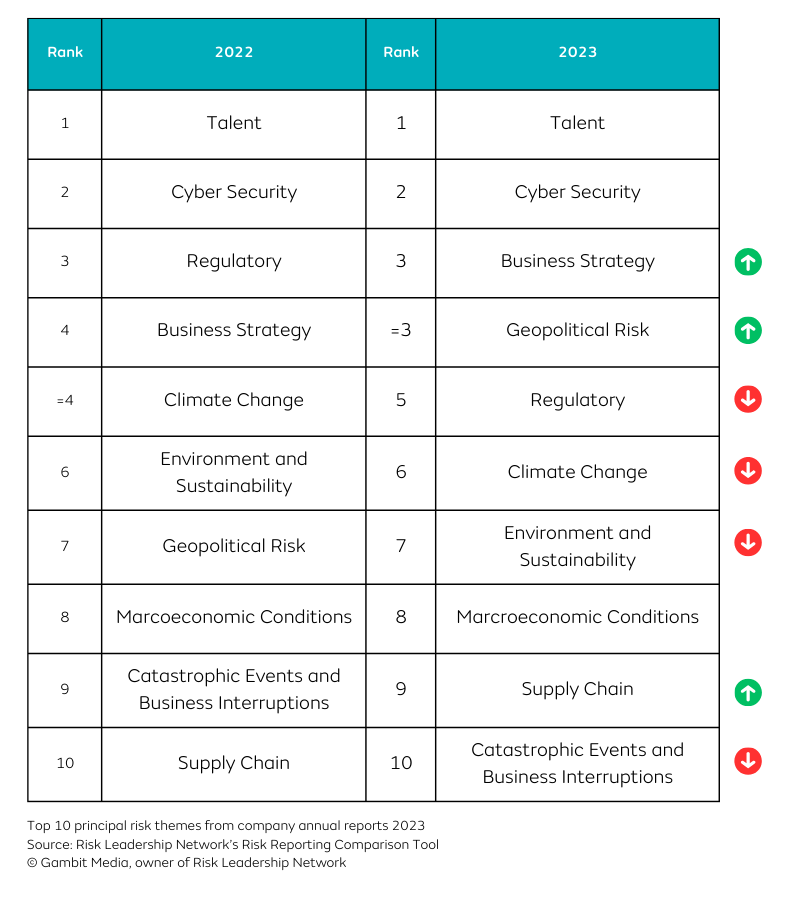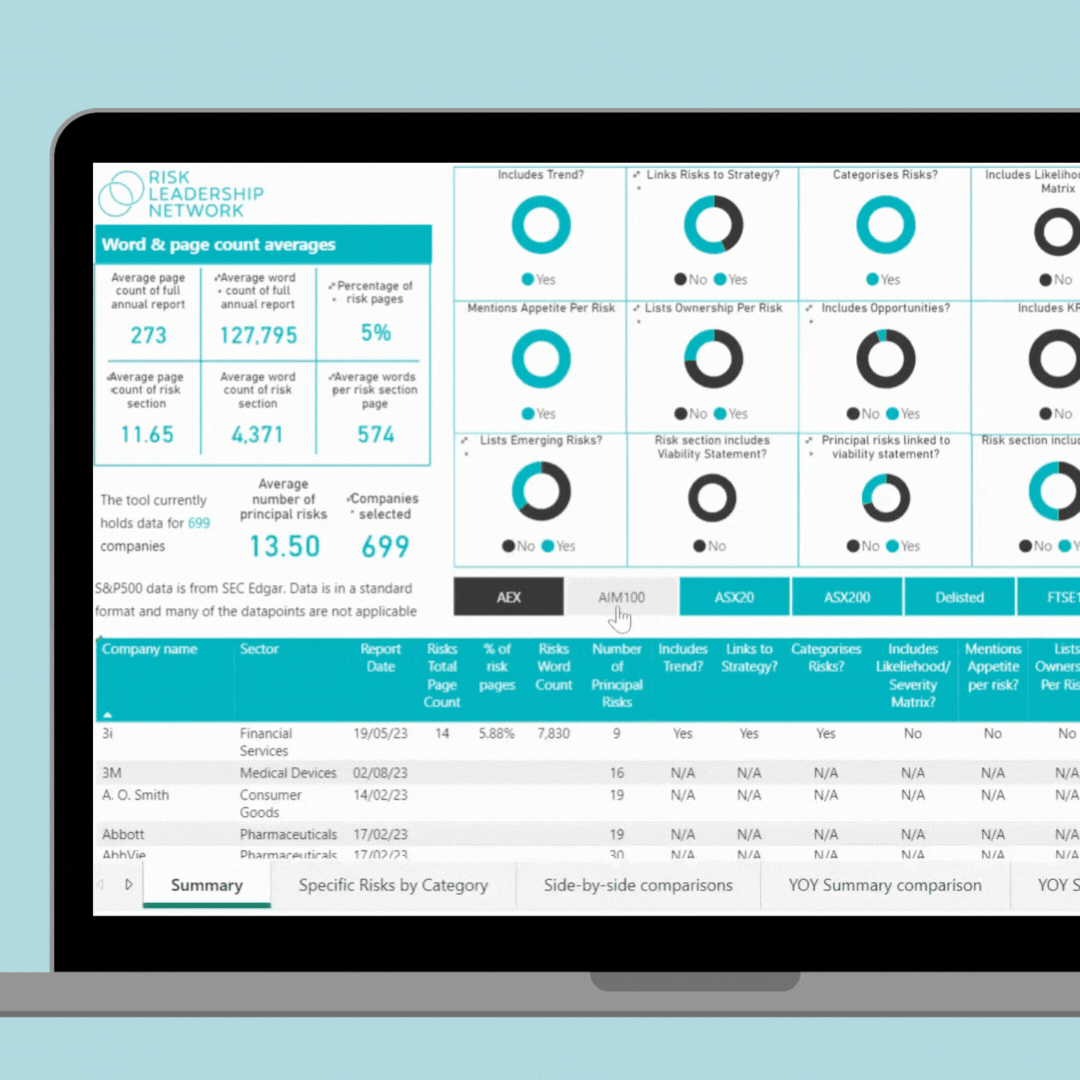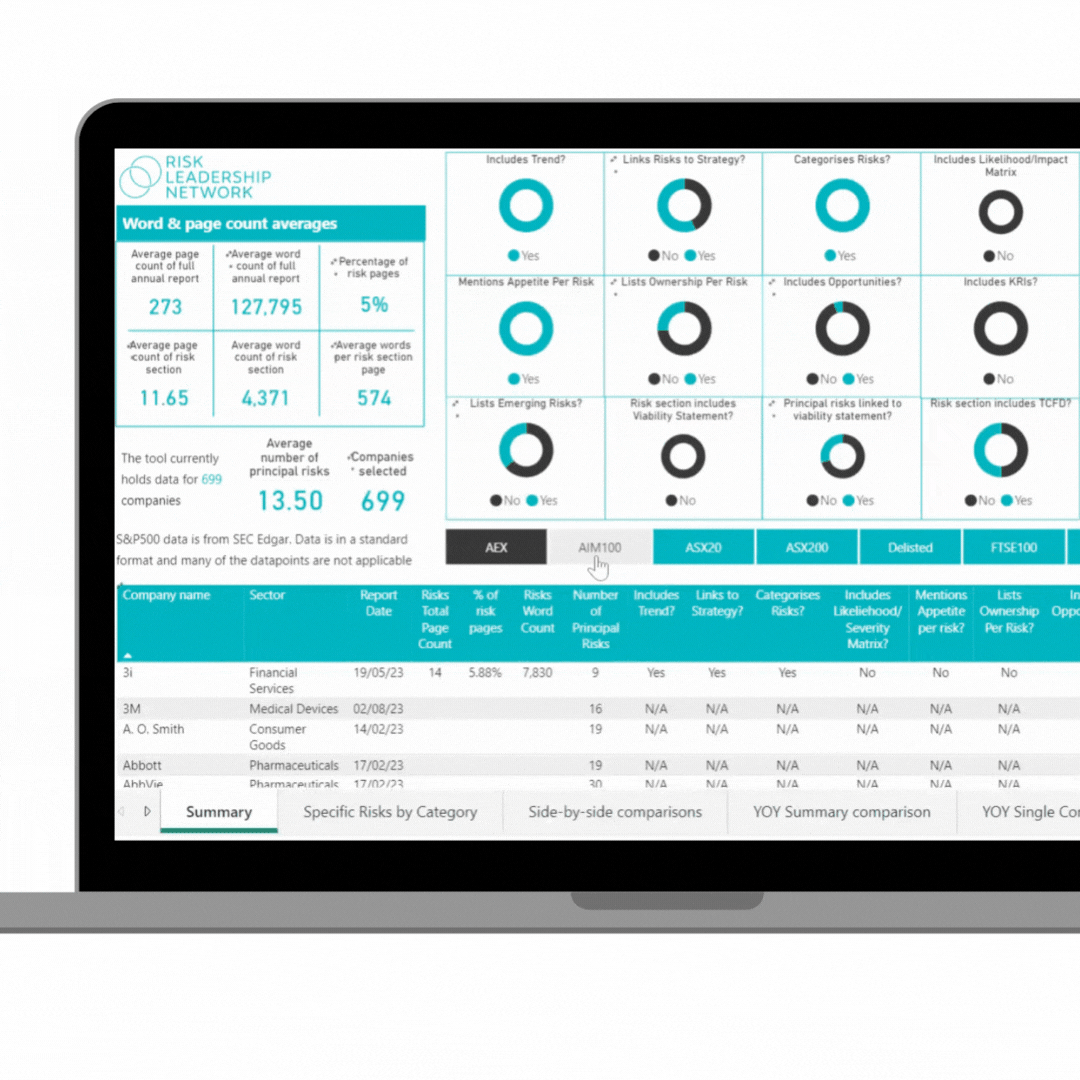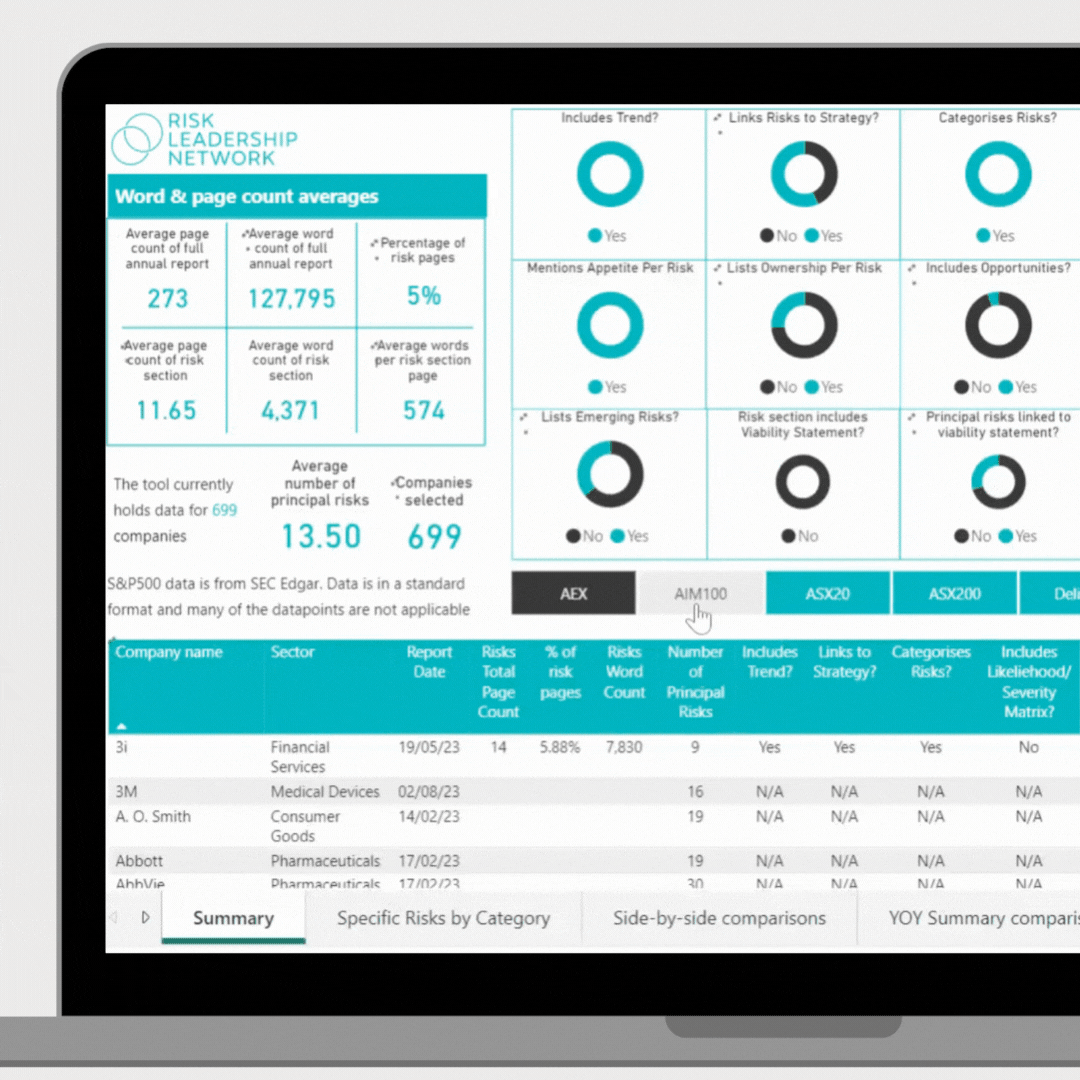Our members tell us that being able to quickly compare their principal risks against global, regional and sector trends is vital, but time-consuming.

To support them, we created our AI-Powered Risk Reporting Comparison Tool which compiles, and analyses trends in, the principal risks reported by FTSE, ASX and other listed companies*.
In this article, we take a look at the top 10 risk categories year-on-year to give non-members a glimpse of some top-level annual trends from the tool.
Most reported principal risks of 2024 vs 2023

* This data includes FTSE, ASX and other listed companies. Although S&P 500 data was added to the Risk Reporting Comparison Tool in response to a member priority last year, we've filtered it out for this ranking.
1. Talent
Talent-related principal risks accounted for 7% of all principal risks reported in 2024. This marks a slight increase from 2023, reflecting a continued focus on employee retention and effective recruitment.
While many organisations simply report "People" as a principal risk, other companies define it in more specific terms.
|
Examples of talent-related principal risks:
|

2. Cyber Security
Cyber Security was the second most commonly reported principal risk category in 2024, lining up with its position in 2023 and accounting for just under 7% of all principal risks reported last year.
Also described as "Information Security" in annual reports, this risk has only continued to grow for organisations amidst other technological developments, including artificial intelligence (AI) and machine learning. As technological capability grows, so too does the potential for cyber attacks.
As well as preventing cyber incidents, and the loss or misuse of data, cyber resilience is a key component of many companies' digital risk profile. This refers to system recovery and the swift resolution of any data breaches in the wake of a crisis, which may be equally important as initial protections.
Risk Reporting Comparison Tool
Created for: Risk Leadership Network members who wanted to save time on their external validation in risk reporting. Data included: Data and trends in the principal/material risks included in company annual reports from FTSE, ASX, Tadawul and S&P listed organisations. Accessible by: An interactive database, available as one of the many bespoke resources created for Risk Leadership Network members. Use to: Save time collating external data on principal/material risks, validate your approach, and sense-check your draft report. Identify trends: Filter by sector, year or company. See which companies have changed their principal risks at the click of a button. Find out more and request a demo on our website. |
3. Regulatory
Regulation is a priority area for many organisations. Regulatory is the third most reported category of principal risk, up from fifth in 2023 and representing nearly 5% of all principal risks in 2024.
Changes to the UK Corporate Governance Code came into effect in January 2025, while the regulatory landscape for environmental reporting continues to evolve at a rapid pace. This may explain why more companies are featuring regulatory risks amongst their principal/material risks and uncertainties.
As well as the threat of compliance violations and any associated sanctions on the business, a number of companies have highlighted uncertainty in the policy environment as a major risk for the business.
This is because unforeseen regulatory changes can impact the business' ability to achieve its strategic objectives, which may be based on any existing regulatory framework.
Some companies also note adverse judgements or wider impacts of litigation as a legal risk for the business — as well as the financial impact of any rulings, this could attract negative attention and damage the business' reputation.
Case Study: Saving time on annual risk reporting following a listing switch
The Risk Reporting Comparison tool is constantly evolving - each iteration in direct response to a member priority.
Take a look at how we worked with a major organisation to save time in their annual reporting following a listing switch - an example of one of the many bespoke solutions we provide to support members with their most pressing challenges.
4. Macroeconomic Conditions
A little more than 4% of all principal risks reported in 2024 relate to Macroeconomic Conditions, which has trended upwards quite significantly since 2023.
Some of the key macroeconomic factors companies have highlighted include fluctuating prices of resources like crude oil, chemicals and natural gas, as well as the stagnation of the property market in some locations.
5. Climate Change
Climate change, and ESG more broadly, remains an important risk area for companies, rising into the top 5 principal risk areas. "Environment and Sustainability" was the next most reported risk category, in sixth place.
Companies are taking different approaches to reporting on climate in their principal risk section. For some, the focus is very much on the physical impact of climate change on operations and assets. For other organisations, particularly in the energy sector, there is emphasis on tangential impacts, such as falling demand for fossil fuels.
There is evidence that new regulatory requirements, such as the Corporate Sustainability Reporting Directive (CSRD), will impact how companies report on climate risks and opportunities.
According to a recent benchmark we ran on approaches to sustainability risk reporting, more companies are planning to provide detail on climate risks in a separate sustainability statement:

However, most risk leaders suggested that they will continue to list climate change as one of their principal risks and briefly describe mitigation strategies.
What principal risks are being reported less?
Although Geopolitical still features as a principal risk for many companies, it dropped from equal third to ninth place in 2024.
In our top 10 emerging risks of 2024 ranking, we noted that Geopolitical risks are increasingly appearing on organisations' emerging risks registers.
Business Strategy also fell a number of places in 2024, from third to eighth, as some organisations deprioritise this category as a principal/material risk.
2025 and beyond
Saving time in validating their external risk report is a key priority for many of our members. And we'll continue to support them with this in 2025 and beyond.
Creating and updating the Risk Reporting Comparison Tool is just one example of a bespoke solution we've provided to support our members. We're currently facilitating targeted peer-to-peer collaboration, producing bespoke benchmarks and creating tailored tools and templates to support our members with their biggest risk challenges this year.
To discuss the bespoke solutions we're providing for our members on their specific risk priorities and to find out how we could work with you, please book an introductory call.
Share this
Related posts you may be interested in

Top 10 principal/material risks of 2023

External risk reporting: 6 key trends from 2024

